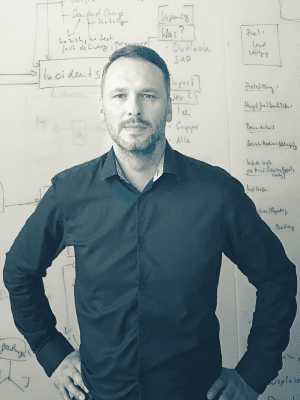Advertorial: Agile Support for Project Success: Practical Insights and Guidelines From an Expert in Change Management


After the Porsche Study of Change Management 2023, only 20 percent of the transformation strategies in German companies achieve the desired results.
And here we go to the core of the article: What are the tips for such complex projects - these aspects answered Expert in Transformation and Change Management and LeverX Business Partner Thomas Burza continue in the text. These are also the focus of the free webinar "Successfully Navigating Project Challenges," which will be held with the expert on Oct. 26, 2023, at 4 p.m. (CET). Registration is here.
Thomas, you have extensive experience in this area. Could you please tell us about one of your projects and describe the biggest challenges you faced?
Th.B.: It was about a year ago when we were talking about transforming an IT organization into a modern IT service organization. This was a large, globally active automotive supplier. Such a project represents an extensive and complex change for the employees, who should be ready for it, because the everyday work, the interaction between IT and business changes fundamentally, and both the business departments and IT are mostly faced with a massively changed working environment.

Expert in Transformation and Change Management, LeverX Business Partner
I was brought into the project when it was already running and threatened to fail. Representatives of the business departments boycotted the cooperation, older IT employees refused to work on the project, and some IT employees quit and left the company. My job was to clean up the situation, smooth the waters and get people to cooperate constructively again. And here are some tips for resolving even such complicated cases. The first step is to analyze the causes of this behavior. Typical causes are often a lack of understanding of the change. Most people just want to understand how their daily work routine will change. Developing this understanding takes time. And this is one of the biggest challenges in every project for me, that the customer understands these circumstances well and helps.
In recent years, I have studied numerous different methods and acquired extensive practical knowledge through my role as a person responsible for transformation projects and as a manager. I have adapted the most proven tools to the present time, expanded them and developed a scalable approach that can be made variable depending on many factors. It is therefore a completely flexible best practice system, which I have already been able to use successfully in many projects as a project advisor or change manager. One of the examples is the so-called Commitment Model ("self-commitment" or "voluntary commitment"), in which I show clients that the growth of acceptance towards a project must first be preceded by the understanding that both understanding and acceptance take time.
How do you measure success?
Th.B: Well-formulated and anonymous surveys make it possible in each project phase to analyze a realistic picture of the mood as well as the attitude of specific stakeholder groups toward the change. Other indicators are, for example, the fluctuation within the project team as well as the number of sick days during the project, the correction costs after go-live and the deviation in time from the originally planned go-live date.
What should companies look for to execute successful change management in a project?
Th.B.: A universal recipe does not exist. However, the attitude of the responsible manager and the project manager is crucial.
Change management is based on the targeted application of carefully collected business data and on scientific findings. But it also deals with the human psyche. And in practice, this is one of the most important. These are the people who make a project succeed or fail.
Low turnover, high-quality results, a positive mood, and adherence to time, cost, and quality are just a few of the positive aspects that result when change management takes a firm place in your project planning. You can practically escape all of these in almost 100 percent if you practice agile change management from the beginning. Implement in LeverX we use the 3 pillars model, which is based on a foundation and modern tools from the disciplines of communication, participation and motivation. This is also one of the topics of the webinar on October 26, to which I cordially invite all interested parties.





